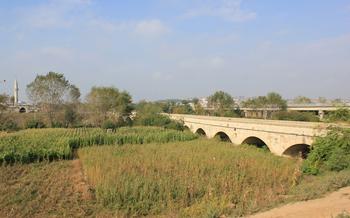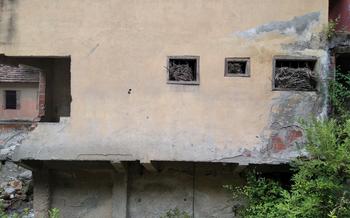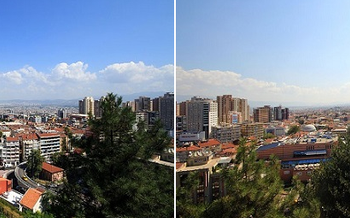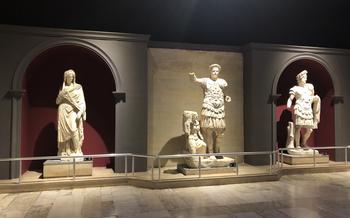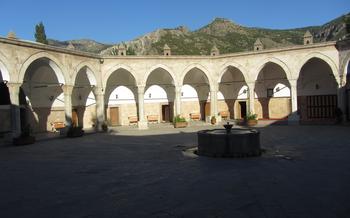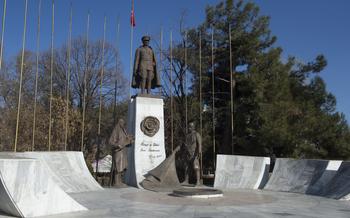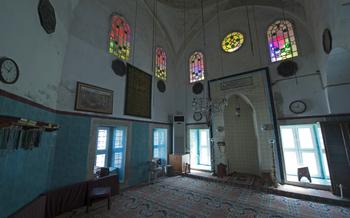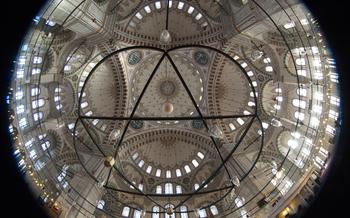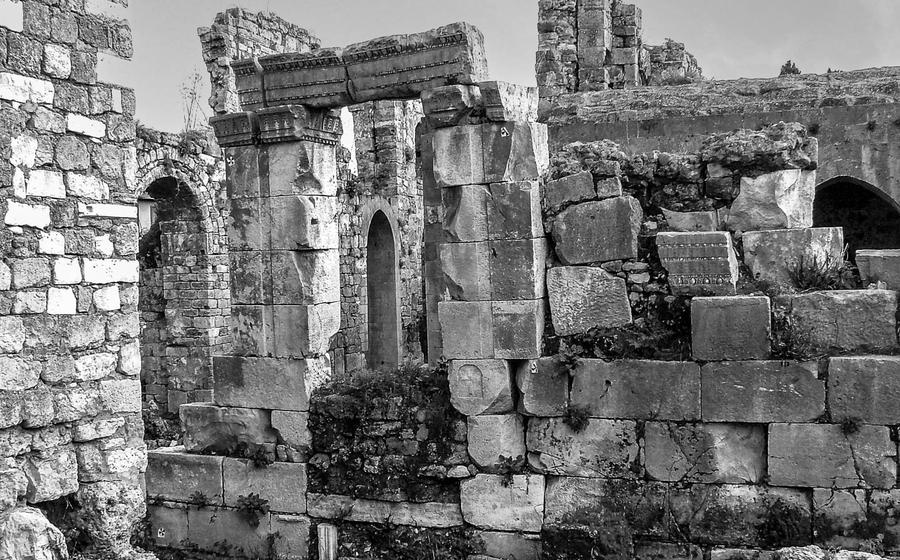
Kesik Minaret Mosque
- Location and Accessibility
- Architectural Marvel
- Interior Beauty
- Religious Significance
- Cultural Importance
- Tourist Attraction
- Visiting Information
- Things to Do Nearby
- Photography Opportunities
- Historical Context
- Local Legends and Folklore
- Restoration and Conservation Efforts
- Educational Programs and Workshops
Location and Accessibility
The Kesik Minaret Mosque is situated in the heart of Antalya's historic quarter, Kaleiçi, within walking distance of many other notable landmarks and attractions. It is nestled amidst narrow cobblestone streets, lined with charming shops, cafes, and historical buildings. The mosque is easily accessible by public transportation, with several bus lines stopping nearby. Visitors can also opt to explore the area on foot, soaking in the vibrant atmosphere and admiring the architectural wonders that Kaleiçi has to offer.
Architectural Marvel
The Kesik Minaret Mosque stands as a testament to the fusion of Byzantine and Islamic architectural styles. Its most striking feature is the minaret, which gives the mosque its name. Rising high above the surrounding cityscape, the minaret is a testament to the engineering prowess of its builders. The intricate carvings and decorative elements that adorn the minaret's exterior showcase the exquisite craftsmanship of the era.
The mosque's facade is adorned with intricate stone carvings and decorative tiles, a blend of Byzantine and Islamic motifs. The main entrance, framed by a pointed arch, features a series of intricate geometric patterns. The interior of the mosque is equally impressive, featuring a spacious prayer hall crowned by a central dome. The walls and ceilings are adorned with vibrant tile work, calligraphy, and other decorative elements, creating a visually stunning and spiritually uplifting atmosphere.
Interior Beauty
The interior of the Kesik Minaret Mosque is as captivating as its exterior. Upon entering, visitors are greeted by a spacious prayer hall dominated by a majestic central dome. The dome's intricate tile work and calligraphy create a mesmerizing visual spectacle, drawing the eyes upward. The walls and ceilings are adorned with beautiful Iznik tiles, featuring vibrant colors and intricate geometric patterns that reflect the mosque's rich artistic heritage.
One of the most striking features of the interior is the mihrab, a niche that indicates the direction of prayer. The mihrab is meticulously decorated with intricate carvings and colorful tiles, creating a focal point for the faithful. The minbar, or pulpit, is another notable element, featuring intricate woodwork and inlaid mother-of-pearl that showcase the mosque's exceptional craftsmanship.
In addition to these architectural marvels, the Kesik Minaret Mosque houses several historical artifacts and religious relics. Among them is a centuries-old Quran, carefully preserved and displayed within the mosque. Visitors can also admire a collection of antique carpets and lamps that contribute to the mosque's serene and spiritual atmosphere.
Religious Significance
The Kesik Minaret Mosque holds immense religious significance for Muslims in Antalya. As a place of worship, it serves as a spiritual sanctuary for the local Muslim community. The mosque's central location near the city center and other important religious sites further emphasizes its importance in the religious landscape of the city.
During the holy month of Ramadan, the mosque becomes a hub of religious activity, with special prayers and Taraweeh (nightly prayers) being held throughout the month. Devout Muslims from all over the city gather at the mosque to offer their prayers and seek spiritual guidance and blessings.
The mosque also plays a crucial role in fostering a sense of community among Muslims in Antalya. It serves as a venue for religious gatherings, celebrations, and events, bringing together people from different walks of life to share their faith and traditions. The mosque's religious significance extends beyond its physical structure; it represents a vital part of the spiritual and cultural fabric of Antalya's Muslim community.
Cultural Importance
The Kesik Minaret Mosque holds immense cultural significance as a symbol of Antalya's rich history and diverse cultural heritage. Its unique architectural style, blending Byzantine and Islamic elements, exemplifies the city's role as a crossroads of civilizations. The mosque's presence in the heart of Antalya serves as a reminder of the city's long and complex history, having witnessed the rise and fall of empires and the blending of different cultures.
The mosque's cultural importance extends beyond its physical structure. It has played a vital role in shaping the city's identity and its relationship with the surrounding region. The mosque has been a center of religious and cultural activity for centuries, hosting religious ceremonies, festivals, and gatherings. It has also served as a place of learning and education, with its proximity to the city center facilitating the exchange of ideas and knowledge.
Today, the Kesik Minaret Mosque remains a vibrant symbol of Antalya's cultural heritage. It continues to attract visitors from around the world who come to admire its architectural beauty, learn about its history, and experience its spiritual significance. The mosque's cultural importance lies in its ability to bridge the gap between past and present, connecting people to the city's rich history and inspiring a sense of cultural pride and identity among locals and visitors alike.
Tourist Attraction
The Kesik Minaret Mosque stands as a popular tourist attraction, drawing visitors from across the globe. Its captivating history, architectural splendor, and religious significance make it a must-visit destination for anyone interested in history, architecture, and religion. Visitors can marvel at the mosque's stunning minaret, intricate tile work, and beautiful interior, which exemplify the harmonious blend of Byzantine and Islamic architectural styles. The mosque's location in the heart of Antalya, close to other historical landmarks, makes it easily accessible and a convenient stop on any sightseeing itinerary. Whether you're a history buff, an architecture enthusiast, or simply seeking a spiritual experience, the Kesik Minaret Mosque promises an unforgettable visit.
One memorable anecdote shared by a tourist who visited the mosque highlights its unique charm. While exploring the mosque's interior, the tourist noticed a group of local women engaged in a lively discussion. Intrigued, the tourist approached the women and discovered that they were discussing the intricate calligraphy adorning the mosque's walls. The women were sharing stories and interpretations of the various verses and phrases, creating a sense of community and shared understanding. This encounter left a lasting impression on the tourist, demonstrating how the mosque serves as a vibrant cultural hub where people can connect and share their experiences.
Visiting Information
Visiting the Kesik Minaret Mosque is a rewarding experience for anyone interested in history, architecture, and religion. The mosque is open to the public daily, and there is no entrance fee. Visitors are welcome to explore the mosque's interior and exterior at their leisure. Guided tours are available for those who want to learn more about the mosque's history and significance.
To fully appreciate the beauty and grandeur of the mosque, it is recommended to visit during the daytime when the sunlight illuminates the intricate carvings and decorative elements. However, visiting the mosque in the evening can also be a magical experience, as the illuminated minaret creates a stunning contrast against the night sky.
When visiting the mosque, it is important to dress respectfully, as it is a place of worship for Muslims. Women should cover their heads with a scarf or shawl, and both men and women should avoid wearing shorts or tank tops.
To avoid crowds, it is best to visit the mosque early in the morning or late in the afternoon. This will give you ample time to explore the mosque peacefully and take in its beauty without distractions.
Things to Do Nearby
After immersing yourself in the history and beauty of the Kesik Minaret Mosque, take the opportunity to explore the surrounding area and discover other hidden gems. A short walk from the mosque, you'll find yourself in the heart of Antalya's Old Town, a charming neighborhood filled with narrow cobblestone streets, traditional Turkish houses, and vibrant shops. Here, you can browse for souvenirs, indulge in local delicacies at cozy cafes, or simply soak up the unique atmosphere of this historic district.
For those interested in learning more about the region's rich history and culture, the Antalya Museum is a must-visit. Located just a few minutes away from the mosque, this museum houses an extensive collection of artifacts from various eras, including the Hellenistic, Roman, Byzantine, and Ottoman periods. Marvel at ancient sculptures, mosaics, and other treasures that shed light on Antalya's diverse past.
If you're seeking a serene escape from the hustle and bustle of the city, head to Karaalioglu Park, situated along the picturesque coastline. Take a leisurely stroll through this beautiful park, admiring the lush greenery, fragrant flowers, and stunning views of the Mediterranean Sea. Enjoy a picnic lunch under the shade of a tree, or simply relax and soak up the tranquil atmosphere.
For a unique and authentic Turkish experience, visit the nearby Arapsuyu Bazaar, a traditional marketplace where you can find an array of local products, from fresh produce and spices to handmade crafts and textiles. Engage with friendly vendors, bargain for the best prices, and immerse yourself in the vibrant atmosphere of this bustling bazaar.
Photography Opportunities
The Kesik Minaret Mosque is a treasure trove for photography enthusiasts, offering a myriad of captivating angles and lighting conditions to capture its architectural splendor. Its towering minaret, intricate carvings, and stunning tile work provide a feast for the eyes. As the sun casts its golden rays, the mosque's facade transforms into a canvas of warm hues, creating a magical ambiance. Early mornings and late afternoons offer the most favorable lighting for capturing the mosque's beauty. Don't forget to experiment with different perspectives to create unique and memorable shots. Share your captivating images on social media using relevant hashtags or tags to inspire fellow travelers and showcase the mosque's grandeur to the world.
Historical Context
The Kesik Minaret Mosque holds a significant place in the historical tapestry of Antalya and the region. Its construction in the 13th century marked a pivotal moment in the city's history, as it transitioned from Byzantine rule to the burgeoning Ottoman Empire. Originally built as a Byzantine church, the edifice underwent a transformation, reflecting the changing political and religious landscape of the time.
In the 15th century, as the Ottoman Empire expanded its influence, the church was converted into a mosque, embodying the rich blend of cultures and beliefs that characterized the region. This conversion marked a new chapter in the building's history, transforming it into a symbol of Islamic faith and devotion.
Over the centuries, the Kesik Minaret Mosque has withstood the test of time, witnessing countless historical events and serving as a spiritual beacon for the Muslim community in Antalya. Its endurance is a testament to the enduring legacy of the Ottoman Empire and the profound impact it had on the city's cultural and religious identity.
Local Legends and Folklore
The Kesik Minaret Mosque is steeped in local legends and folklore that have been passed down through generations. One popular tale tells of the mosque's construction, claiming that it was built in a single night by a group of الجن (djinns) or spirits. The legend goes that the djinns were tasked with building the mosque by a powerful sultan, who promised to grant them their freedom upon completion. Working tirelessly, the djinns managed to finish the mosque before sunrise, except for the minaret, which remained incomplete. Angered by the broken promise, the djinns left the minaret unfinished, giving the mosque its distinctive "cut" appearance.
Another legend associated with the mosque involves a young woman named Ayşe, who was known for her piety and devotion. According to the story, Ayşe would often pray at the mosque, seeking solace and guidance. One night, as she was praying, a bright light appeared from the heavens, illuminating the entire mosque. The light is said to have been a sign from God, confirming Ayşe's faith and granting her wishes.
These legends and stories add a layer of mystique to the Kesik Minaret Mosque, making it not just a historical site but also a place of cultural and spiritual significance for the local community.
Restoration and Conservation Efforts
The Kesik Minaret Mosque has undergone several restoration and conservation efforts throughout its history to preserve its architectural integrity and historical significance. The first major restoration project was undertaken in the 19th century during the reign of Sultan Abdulhamid II. During this time, the minaret was repaired, the dome was strengthened, and the interior was renovated.
In the 20th century, the mosque underwent further restoration work under the supervision of the Turkish Ministry of Culture and Tourism. This included the repair of structural damage, the cleaning and restoration of the tile work and decorative elements, and the installation of a new roof to protect the interior from the elements.
In recent years, the mosque has benefited from ongoing conservation efforts aimed at preserving its unique architectural features and ensuring its longevity. These efforts include regular maintenance and repairs, as well as the implementation of modern conservation techniques to protect the mosque from the effects of aging, environmental factors, and tourism.
The restoration and conservation efforts at the Kesik Minaret Mosque are essential for preserving this important historical site for future generations. By maintaining its architectural integrity and preserving its cultural significance, these efforts contribute to the preservation of Antalya's rich heritage and ensure that the mosque continues to serve as a place of worship, a tourist attraction, and a symbol of the city's history and culture.
Educational Programs and Workshops
The Kesik Minaret Mosque is not just a place of worship but also a center for learning and cultural exchange. Several educational programs and workshops are offered at the mosque or in its vicinity to promote cultural understanding and interfaith dialogue. Visitors can participate in these programs to gain a deeper insight into the mosque's history, architecture, and religious significance.
One popular program is the "Explore Islamic Architecture" workshop, which takes participants on a guided tour of the mosque, highlighting its unique architectural features and explaining the symbolism behind its design. Another program, titled "Calligraphy and Islamic Art," teaches participants the art of Islamic calligraphy and allows them to create their own artistic pieces inspired by the mosque's intricate tile work and decorative elements.
For those interested in learning more about the mosque's religious significance, there are regular lectures and discussions on topics such as Islamic history, theology, and practices. These sessions provide a platform for interfaith dialogue and promote understanding between people of different faiths.
By participating in these educational programs and workshops, visitors can not only appreciate the beauty and significance of the Kesik Minaret Mosque but also gain a deeper understanding of Islamic culture and its contributions to the rich heritage of Antalya.


